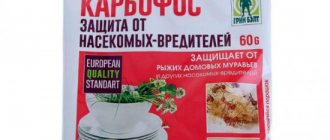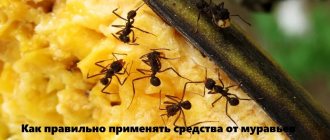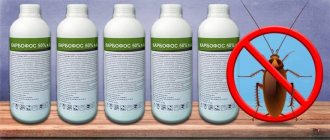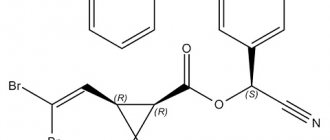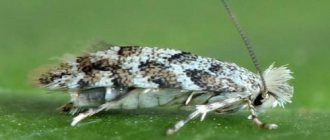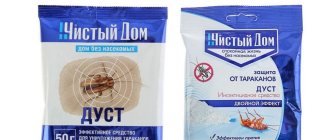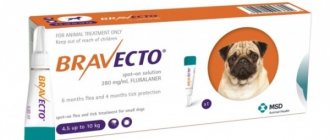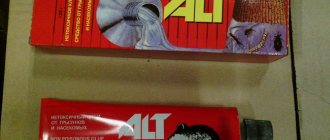There are plenty of harmful insects in nature. Some attack apartments and houses. But most of them damage plantings in the garden and vegetable garden. We will not list all types of insect pests.
Let’s focus on one of the most dangerous – bedbugs. Creatures can live in nature and at home. Quite resistant to poisons that are commercially available. Because of this, chemists have a hard time.
It is necessary to constantly create a lot of new substances. The drug Karbofos solves problems with “uninvited guests” that damage greens and healthy crops.
It differs in the greatest effectiveness from other pest control products. And especially bedbugs. The main task of the gardener remains to fully study the instructions for use, composition and other important points.
Description and characteristics of Karbofos
Karbofos is an insecticide. It is deservedly called the most productive substance that eliminates harmful “inhabitants” of the garden. Has a wide spectrum of action. Promotes the destruction of harmful insects that are found on the soil (open, closed ground).
There are few similar substances. They differ in cost, efficiency, and methods of use.
Organophosphorus substance. It contains several components, but the main one is malathion. If we consider only the main ingredient of a chemical product, then its appearance:
- colorless;
- liquid form;
- increased volatility;
- Strong smell.
The compound is oily. But it dissolves quite quickly. Since Karbofos is a volatile substance, it is worth remembering: the ability doubles if used in dry, hot weather. The higher the temperature, the faster the liquid working solution will evaporate.
With its help, the destruction of all known pests is quick and effective. Provided that Karbofos has thickened during long-term storage, the abilities do not change. It is also productive, toxicity persists.
You can buy insecticide in different forms, from different manufacturers:
| Appearance | Manufacturers |
| Powder | Alatar |
| Liquid emulsion in ampoules | Aktellik |
| Tablet form | Karbofos |
| Liquid | Iskra-M |
Differences in purchased substances: presence of additives, concentration of constituent components. Toxicity for humans is average (grade 3). It has a strong smell, but it quickly disappears and does not leave any pungent traces.
Advantages and disadvantages
The insecticidal acaricidal agent is characterized by a number of significant disadvantages:
- Insects are killed by direct contact with a toxic substance
- To get rid of pests, complete rather than partial treatment of the plant is required
- using an insecticide outdoors can lead to the destruction of the active compound included in the composition, which leads to a decrease in effectiveness
With prolonged use of one type of poison, pests develop an addiction. For this reason, insects gradually stop reacting to the poison. However, Karbofos powder against bedbugs and other pests also has advantages:
- even the drug diluted with water poses a serious danger to insects
- The product is universal, therefore it destroys representatives of different types of pests
- in a room where the active substance is not exposed to external factors (wind, precipitation, solar radiation), the drug is characterized by a prolonged action
- due to its rapid destruction under the influence of external factors in the open air, Karbofos does not linger in the soil and is quickly removed
- relatively low price, availability
Composition and principle of action
The composition of Karbofos has a special structure. It is both fatally toxic to cold-blooded creatures and weak against warm-blooded creatures. Classified as an FOS or organophosphorus compound. This makes it a class 3 hazard for people and pets, but a lethal poison for most types of pests.
The formula of FOS Karbofos consists of organic substances: sulfur and phosphorus. The active substance not only eliminates the harmful problem, but acts by influencing the nerve endings of the insect: it completely paralyzes it. Penetrates through the intestines.
Features of the impact on pests
When intoxication of the body occurs, the first sign of this is paralysis, which occurs as a result of blocking nerve impulses. Poisoning with Karbofos leads to irreversible processes in hydrolytic enzymes (inactivation without the possibility of further restoration of the original structure). Once in the insect's body, the poison is converted into a stronger analogue - malaoxon. This occurs under the influence of oxidizing agents. If the poison penetrates plants or the body of a warm-blooded creature, such a reaction does not occur.
This factor explains why Karbofos has a stronger effect on sucking and gnawing pests. Humans are less likely to suffer from this poison, but caution must still be exercised while using it. With long-term use of products such as Medilis malathion or Karbofos, as well as their analogues, insects develop resistance. In the body of pests, the active substance simply breaks down into safe products.
If we compare Karbofos, which represents a group of organophosphorus compounds, with its analogues, it is gradually being replaced by more modern and effective agents belonging to neonicotinoids and pyrethroids. Substances such as Medilis malathion, Karbofos and the like are recommended to be alternated with other types of insecticides. Then the pests will not develop resistance or this will happen much later than in the usual case.
Today you can purchase multicomponent poisons that will contain organophosphates and pyrethroids. This option is even more effective. However, to this day Karbofos does not lose popularity due to its ease of use and affordable price.
Features of use in the garden
Karbofos for the garden is an irreplaceable substance. Its effect covers 90% of harmful insects that can be found on crops and in the soil. The drug is needed not only in gardening; its use in medical institutions, agriculture, and forestry has become an active assistant.
At its core, Karbofos is a disinfectant. In addition to disinfection, the positive aspects include:
- crop preservation;
- increase in fruits;
- elimination of not only adult individuals, but also their larvae.
In this case, the soil is not damaged. Requires compliance with standards and dosages. Follow strictly the recommendations specified in the instructions. Preparation for each culture is prescribed and has its own nuances and characteristics.
Karbofos is recommended to combat:
- codling moths and gallicia;
- all types of bedbugs and sawflies;
- aphids and honeysuckers;
- weevils and whiteflies, mites.
Important! The product poses a threat to the above insects. But besides them, Karbofos also kills useful “visitors” of the dacha and vegetable garden. Its detrimental effect affects pollination, as pollinating insects are eliminated. Hence the rule of use: it is prohibited to carry out any activities with the working substance during the flowering period.
Drug summary
Preparations containing karbofos are used not only by farmers, but also by owners of personal plots. The list of the most popular chemicals includes “Fufanon-Nova” (440 g/liter), “Alatar” (225 g/liter + 50 grams of cypermethrin), “Antiklesch” (525 g/liter), “Inta-Ts-M” (140 g/kg + 29 grams of cypermethrin) and “Profilaktin” (13 g/liter + 659 grams of vaseline oil).
Rules for preparing the solution
The Karbofos insecticide should be used strictly according to the recommendations and instructions compiled by specialists. The working solution will need to be diluted according to the problem, since the liquid affects different insects differently. There is no standard dosage for mixing.
The working solution is prepared according to a strict procedure: Karbofos is mixed with a small amount of water. The required volume of liquid is gradually added. In this case, stirring should be without interruption. The working mixture is used only after obtaining a homogeneous suspension.
The dosage is calculated using different formulas:
| Plant | Treatment | Dosage | Pests |
| Quince, apple and pear | Sapling, young tree – up to 2 liters, fruiting tree – 7-10 liters | Bucket (6-7 l)+60 g Karbofos | Leaf roller and scale insect, weevils and cherry flies |
| Sweet cherry, plum, cherry tree | 1.5-2 l per planting | 8 l + 55-60 g of substance | 1.5-2 l per unit Sawfly, scale insects, gall midges, leaf rollers, bud moth |
| Apricots, peaches | Adult plant – 10 l, young plant – 2 l | 10l package of substance | Leaf roller, codling moth |
| Shrubs (gooseberries, currants, raspberries) | 1-1.5 liters per bush. Raspberries - per hundred | 1 package+8 l | Weevils, gall midges, bud moths, scale insects |
| Grape | Use 1-1.5 liters per hundred square meters | For 8 l add a package of product | Spider mites, phylloxera, mealybug |
| Peppers, tomatoes, cucumbers | It is used by spraying. 10 sq. m.=1 l of working mixture | 10 l+60 g product | Aphids and whiteflies, spider mites and germ flies |
Scope of application
The product is successfully used to exterminate various types of mites, aphids, Colorado potato beetles, onion flies, scale insects, whiteflies, and bud moths.
Due to its wide spectrum of action, Karbofos is used in various industries:
- in crop production to preserve plantings and seed stocks of agricultural crops;
- in animal husbandry for the destruction of blood-sucking insects;
- in the forestry industry to combat wood borers and other tree pests;
- in medicine for disinsection of work areas;
- in veterinary medicine to rid pets of endo- and exoparasites;
- in everyday life for the extermination of flies, fleas, bed bugs, black and red cockroaches, house ants.
How to process
Treatment options, options and the need for application are an important point for preserving the crop and eliminating harmful “visitors”. To obtain complete information about this, study the instructions for use.
The standard procedure for treatment is spraying. The working fluid is applied using a respirator. The work can be considered complete after completely wetting the green part of the plant (stem, foliage). The rules for working depend on the type of crop.
Berry bushes
Shrubs are fully protected when spring gardening is carried out. It must be done before flowering. The second protection measure should be carried out after full flowering and fruit harvest.
If treatment with Karbofos against currant bugs is carried out, then spraying is allowed up to 3 times, instead of the standard two:
- appearance and development of kidneys;
- period of inflorescence formation;
- several days before the start of harvesting work.
Strawberries and garden strawberries are subject to attacks by bugs. As well as mites and strawberry weevils. To prevent this phenomenon, spraying is carried out in the spring (after the snow melts) during the budding period. Then they are treated with Karbofos in September (first week).
Raspberries and blackberries are also sprayed twice: in the spring after the snow melts and the buds appear, after harvesting the fruits.
Fruit trees
It is always recommended to treat fruit and berry trees with Karbofos. The working solution is applied in the spring to the surface of the plantings. Spraying of trees takes into account the age of the crop. In general, one tree takes up to 8-10 liters. for young animals – 2-5 liters.
If you have citrus trees in your country house or greenhouse, one unit will require 3-5 liters. To spray a sea buckthorn tree, the working fluid is made more concentrated: 3 liters of water + 50-60 g of Karbofos. Spraying calculation by quadrature: 10 sq. m = 2 l of working suspension.
Flowers
Karbofos against bedbugs is used in gardening no less often than for vegetable crops. The substance provides protective properties against pests:
- spider mite and sawfly;
- aphids and bedbugs.
With Karbofos, garden crops and flowers feel great. But exact dosages will be required: take 50-60 g of Karbofos and dilute it in a small amount of water. Dilute to obtain 8 liters of working suspension.
Spraying is carried out in the standard way: until the green part of the flower is completely wetted. Application of the product is provided no more than 2 times a season: in the spring before flowering and after. Watering should be calculated based on quadrature: 2 liters of working mixture per 10 square meters. The following can be processed:
- rose bushes;
- barberry;
- jasmine.
As practice shows, after applying the solution to other garden plants, Karbofos does not cause harm. But it’s worth doing a compatibility test first.
Merits of Karbofos
Karbofos has an unpleasant odor, which is justified by its high efficiency and low price. Many analogues of this product do not meet their characteristics. This drug has been used for many years and has no complaints from consumers. After disinfecting the premises with this product, the bedbugs disappear forever, and if there are careless neighbors who breed these insects, then for preventive work you can use a more gentle, safe product. This will help prevent insects from becoming accustomed to the active substances of the poison.
Concomitant use with other drugs
In the garden and vegetable garden you have to use various substances. The use of fungicides and growth stimulants is a necessary measure to obtain high yields. Therefore, it is worth studying how well the products are compatible.
You can find out such information from the instructions for use or conduct a short compatibility test. If Karbofos cannot be combined for some reason with fertilizers or fertilizing, you can consider and use analogues of the product.
Of the drugs that really go well with Karbofos, it is recommended to use Aliot, Alatar or Fufanon. And Novaktion ensures an increase in the effect of the protective substance.
The Permethrin + Karbofos procedures show good results. This combination maintains plant resistance to pests while providing 100% protection.
But there is a categorical taboo on the use of Karbofos with Fazaln. The substances are similar to each other and can destroy green spaces and damage the fruiting process.
If you need to replace Karbofos, use the list of similar drugs:
- Diazinon;
- Imidacloprid;
- Permethrin.
Analogues of Karbofos
Combat
Modern chemical substance. Helps quickly and effectively get rid of bedbugs. Available in the form of spray, gel, traps. Aerosol Combat, a powerful universal remedy. Destroys all parasites that settle in people's homes. They do not pose a danger to humans and animals. Used for treating apartments, houses, kindergartens, schools, offices, hospitals and summer cottages.
Solfisan
An effective product for controlling household insects. It contains the newest active substance – cyfluthrin. Bedbugs are not familiar with this ingredient, so they have no adaptation to it.
Executioner
One of the newest, most common means of combating bedbugs. It is highly effective in combating any number of insects. It owes its popularity to its safety for humans, animals and harmlessness for use in everyday life. Does not have a foul odor.
Ecokiller
The insecticidal powder is safe for animals and people. Odorless, does not cause allergic reactions on the skin, has no irritating properties for mucous membranes. Particles of the drug, falling on the insect's shell, destroy the wax layer, leading to the death of the insects. Several treatments are necessary due to the required contact of the substance with the parasites. The downside of the product is its inaction on the laid eggs of bedbugs. Harmful insects cannot adapt to this product due to the lack of addiction, which cannot be said about many other chemical agents.
Precautionary measures
The main question that Karbofos users ask: is it harmful to humans, is intoxication possible for pets? Since the substance belongs to hazard class 3, precautions should be observed in any case.
Low toxicity for warm-blooded animals does not mean that the drug is completely harmless. When diluting or working with the solution, you should wear a protective suit and provide protection for mucous membranes. It is prohibited to consume food or drink during dilution or treatment with Karbofos.
After all procedures, hands are washed under running water and laundry soap. If the solution gets on open areas of the body, then you cannot wash it off with hot water. Is it dangerous. Also, the solution and treatment are carried out with cold liquid.
Important! Applying the solution to plants is prohibited in the presence of reservoirs and containers with drinking water at a distance of 1-2 km.
History of appearance
In the territory of the former Soviet Union, a substance from the chemical class of organophosphorus compounds is better known as karbofos. The development of malathion began in the 40s of the last century, in particular, the scientist Cassady was involved in this. The substance was obtained by adding dialkyldithiophosphoric acids to compounds having a double bond. In 1953, malathion received the name by which it is still known today.
Around the same time, Soviet scientists were also engaged in similar research and as a result they obtained the same substance, which was called karbofos. Today, malathion is one of the oldest active ingredients used in insectoacaricidal chemicals.
Expiration date and storage rules
The structure of Karbofos is liquid. They buy the suspension already in bottles that close well. In this case, storage of the insecticide provides additional points:
- Keep the drug away from heating devices and heat.
- Store in a separate room designated for storing garden tools. Do not keep food, dosage forms or crops near the substance.
- Keep children and animals away from the insecticide.
Security measures
Preparations based on karbofos belong to the 3rd or 4th toxicity class, depending on the presence of additional substances and the concentration of the main component. When working with liquid, you must ensure that it does not come into contact with your skin or eyes.
Expert opinion
Zarechny Maxim Valerievich
Agronomist with 12 years of experience. Our best country expert.
Ask a Question
To do this, use protective clothing - overalls, gloves. Also, to prevent chemical vapors from entering the respiratory tract, use a mask or respirator. When working with insectoacaricides, it is forbidden to drink, smoke or eat food so that the substance does not get on the mucous membranes.
Once the plant treatment is complete, wash all clothing and shower with detergent to remove any chemical residue.
